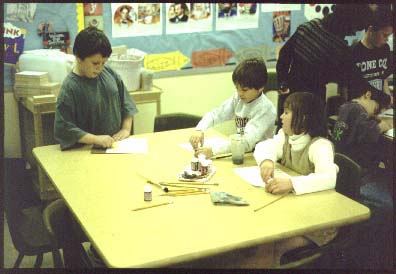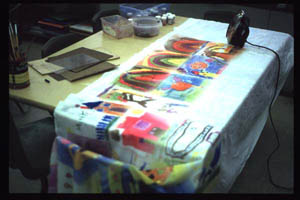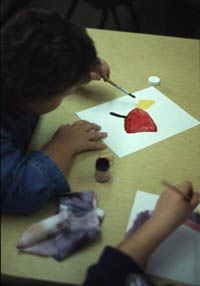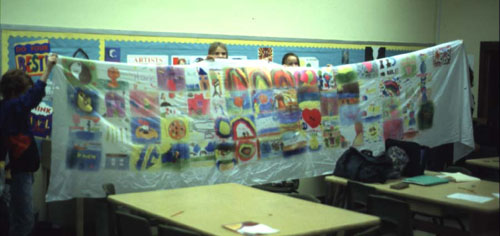The Course:
Make a group mural using transfer paints and crayons. Class time should be between 1-2 hours with no more than 30 students per teacher. Can be used for grades K-9.
Description:
Students make a painting on regular copier paper using special paints and crayons. The paintings are then ironed onto a large sheet of synthetic (polyester) fabric. The resulting work can be hung in the school, used as a banner, or used as a backdrop for a play or event.

Students drawing on paper.



